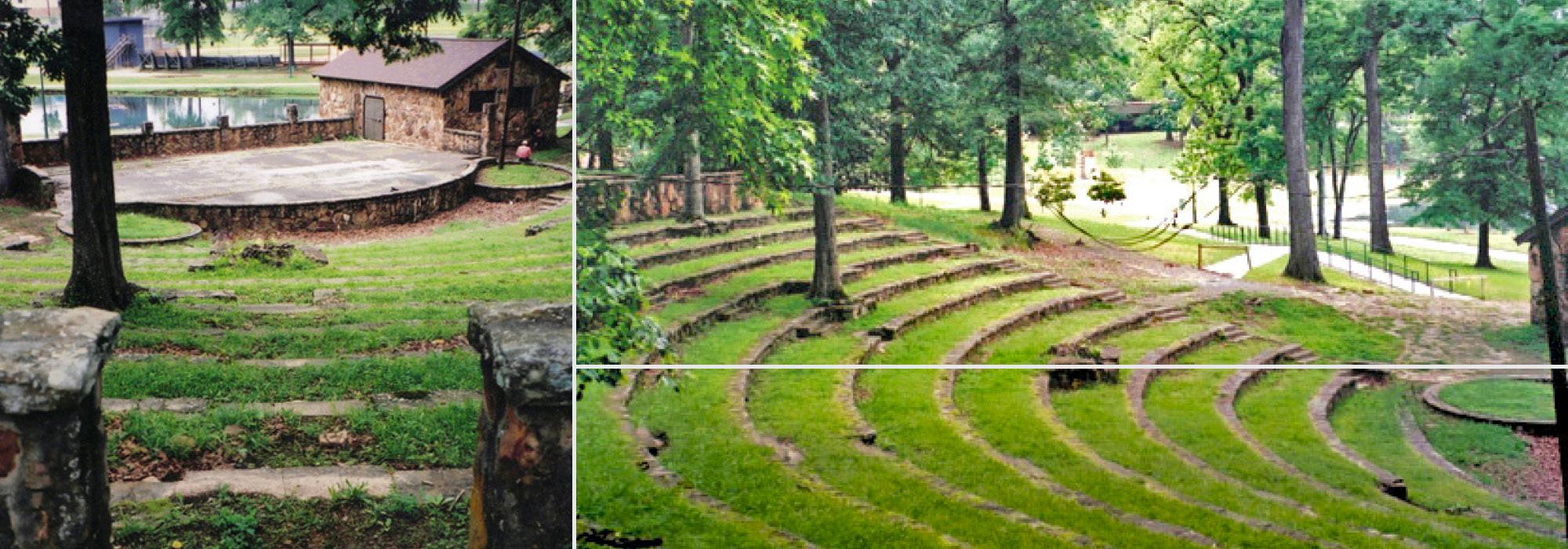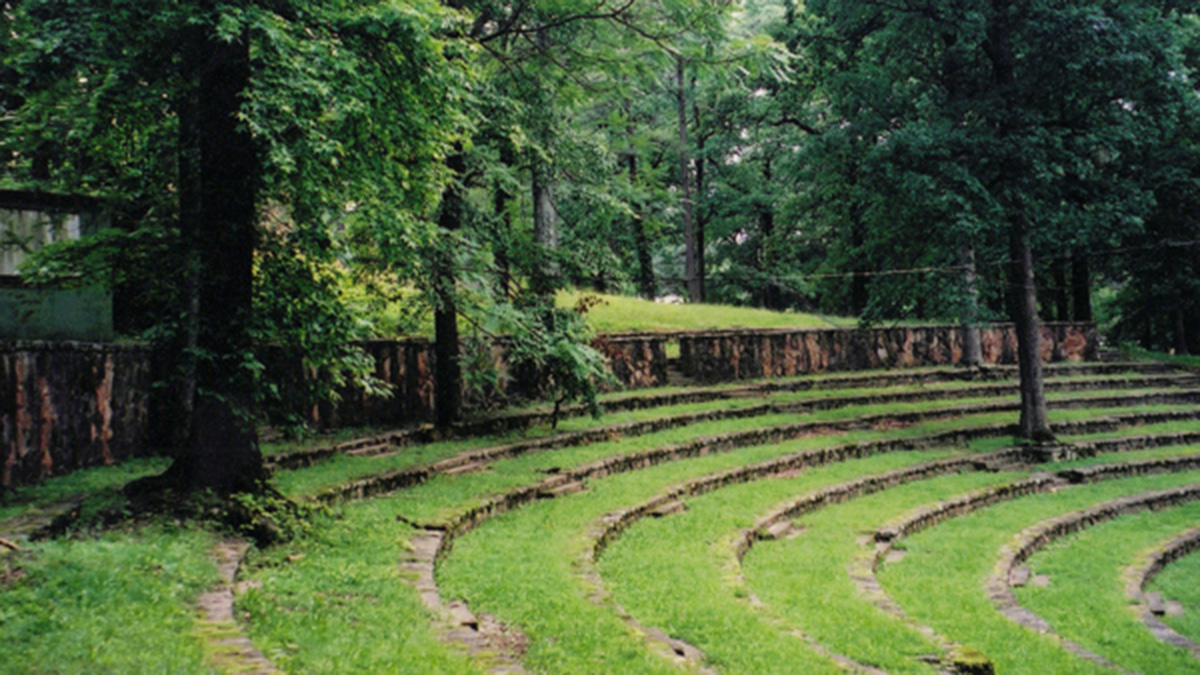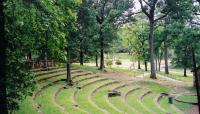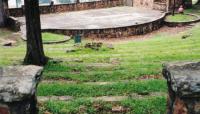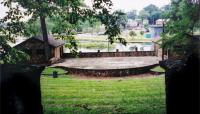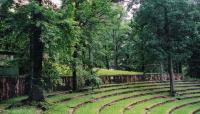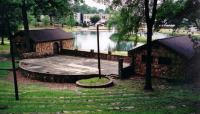Landscape Information
In 1931, Avondale Park was improved with funding provided by a municipal works program intended to employ locals during the onset of the Great Depression. Landscape architect Rubee Pearse designed an open-air amphitheater for the north side of Park Mountain, the parkland’s highest elevation. The gently sloping hemisphere is enclosed and buttressed by native sandstone retaining walls and encircled by low stone risers and grass covered steps that provide audience seating. The concrete stage, elevated two feet above grade with a rounded front edge, is supported by a scrolling, sandstone wall that ends in two circular platforms that sit slightly lower than the stage. Twin sandstone pavilions flank the stage, and together with a low stone wall with piers, frame a view of the pond beyond. Mature deciduous trees shade the entire area, and a few interspersed trees interrupt the stairs within the seating area.
Renovations in 2009 replaced a latticed screen on the low wall, creating a backdrop to the stage. Linear planting beds filled with small boxwoods were placed on the backstage, and the circular areas were planted with colorful flowers. The Garden Theater, as part of Avondale Park, was listed in the National Register of Historic Places in 1998.



